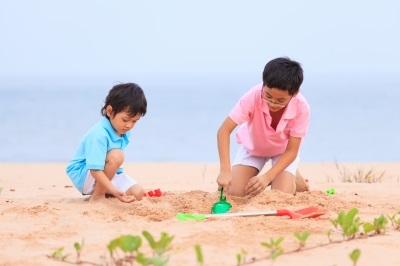 If you’re a parent, you’re probably familiar with the phrase “summer brain drain” which refers to the significant loss of learning that occurs in under-stimulated students during the summer months. Sadly, this loss has not been exaggerated by the media and – as many teachers can attest – is all too real a problem when September arrives.
If you’re a parent, you’re probably familiar with the phrase “summer brain drain” which refers to the significant loss of learning that occurs in under-stimulated students during the summer months. Sadly, this loss has not been exaggerated by the media and – as many teachers can attest – is all too real a problem when September arrives.
“All young people experience learning losses when they do not engage in educational activities during the summer. Research spanning 100 years shows that students typically score lower on standardized tests at the end of summer vacation than they do on the same tests at the beginning of the summer.” (White, 1906; Heyns, 1978; Entwisle & Alexander 1992; Cooper, 1996; Downey et al, 2004).
Conventional wisdom suggests lengthy summer reading lists, timed math worksheets, or perhaps a summer class thinly disguised as “camp.” But there’s another, far more enjoyable option that will get kids engaged in real learning over the summer months – the outdoor classroom.
What is the outdoor classroom?
It is simply using the great outdoors as an occasion to show kids rather than tell them about the world. With increased education cuts and time constraints, this is an exciting opportunity that is sadly lacking in many of today’s conventional classrooms. Getting kids involved — hands-on — fosters a love of learning, intellectual curiosity about the world around us, and may even inspire a lifelong passion or career choice!
In the outdoor classroom, you’re the teacher. So, what’s on your lesson plan?
How about a weekly nature walk to identify indigenous flora and fauna? Keep resources handy to classify objects, since identifying your “finds” is part of the fun. Some suggestions include Smithsonian Handbooks’ Insects and The Audubon Society Field Guide to North American Rocks and Minerals. A dedicated shelf or window ledge at home for treasures – a broken robin’s egg, a chunk of shiny mica, or an unusual pinecone – keeps kids engaged long after the walk is over.
Or try stargazing on summer’s night, no fancy telescope required. How many constellations can you identify? KidsAstronomy.com is a fantastic, free resource to help you easily identify everything from the Big Dipper to Orion’s Belt, as well as determine the phases of the moon, plus more. Keep a chart of the heavens on the fridge and see how many you can add over just a few sessions!
Seine fishing is a method of fishing using a dragnet. Less tedious than traditional bait and hook fishing, this method produces results almost immediately. Seine nets can be used in just a few feet of water at the beach and offer an exciting glimpse of what is really swimming beside us! Seine fishing should only be done under adult supervision, remember to always catch and release, and remind children to “look, but don’t touch.”
Whatever you choose to do with your kids, start now to stop the summer brain drain. Get outside and learn something new!
About Back to Basics Learning Dynamics, Inc. in Nationwide
Back to Basics offers 1-on-1 tutoring in 60+ subjects, professional development, translating and interpreting in 21 languages, speech therapy, occupational therapy, behavior specialists, reading specialists, paras, ELL services, homebound services, RTI support, psycho-educational testing and test prep. We also offer summer school and educational summer camps, original credit and credit recovery, along with unique enrichment options such as music, art and photography. Plus, Back to Basics Private School is Nationwide’s only Department of Education approved 1-on-1 Private School for K-12.
Back to Basics Learning Dynamics is the undisputed leader in 1-on-1 tutoring in Nationwide and the tri-state area for over 60 subjects. Since 1985, our commitment to a 1-on-1 teaching method has differentiated us from other educational service providers.
We serve the diverse needs of a range of students – from those who simply need some academic support, to those who are learning disabled, hearing or visually impaired, ADHD, gifted, or on the Autism Spectrum including High Functioning Autistic and Asperger’s.
Photo by Sura Nualpradid and FreeDigitalPhotos.net.
